Aeration in Aquaculture: Techniques and Benefits

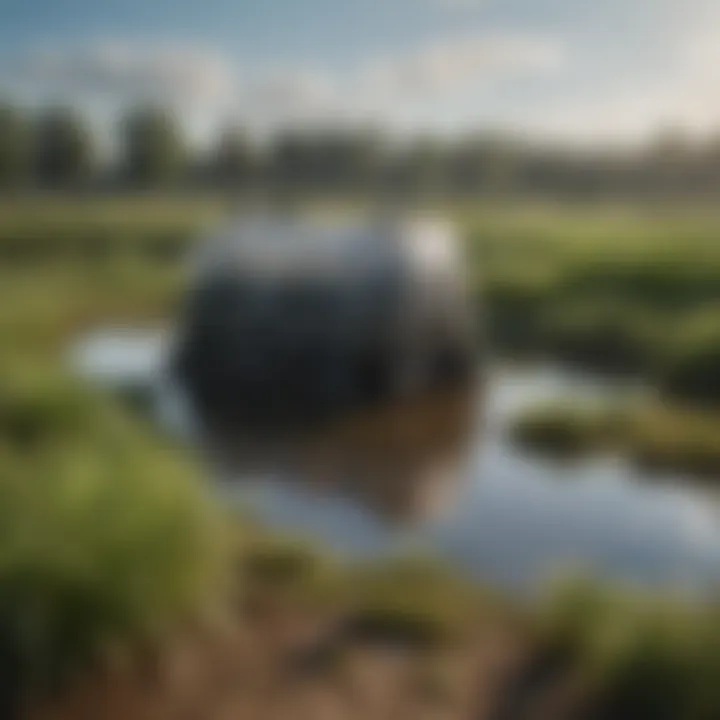
Intro
Aeration in aquaculture plays a crucial role in maintaining the health of aquatic ecosystems. It refers to the process of increasing the oxygen supply in water, which is essential for fish and other aquatic organisms. Effective aeration is vital for the sustainability of fish farming operations, influencing growth rates, reproductive success, and overall health of the environment. In this section, we will delve into the definition and importance of aeration, current trends in the field, and its applications within aquaculture.
Overview of the Topic
Definition and Importance
Aeration is the introduction of air (oxygen) into water bodies. In aquaculture, it serves several purposes, including enhancing oxygen levels, removing carbon dioxide, and controlling temperature. High oxygen levels are necessary as fish, shrimp, and other aquatic organisms require oxygen for metabolism. Moreover, adequate oxygen levels can help mitigate the stress these organisms face in dense environments.
Understanding the importance of aeration can lead to improved production and sustainable practices. Proper aeration can prevent the depletion of oxygen, which is essential for fish health and productivity. Notably, low oxygen levels can lead to fish kills, making aeration systems vital to successful aquaculture management.
Current Trends
The aquaculture industry is constantly evolving. Recent years have seen an uptick in the adoption of innovative aeration systems. These systems range from traditional devices like diffusers to more advanced technologies, including surface aerators and membrane aerators. Further, there is a growing emphasis on energy efficiency and environmental sustainability.
Another trend is the integration of sensors and monitoring systems. These tools provide real-time data on water quality. The use of technology enables farmers to make informed decisions about aeration needs. The goal is to optimize production while reducing costs.
Key Techniques and Practices
Step-by-Step Guide
- Assess Oxygen Levels:
Regularly monitor the DO (Dissolved Oxygen) levels in your aquaculture system. This assessment helps you decide the need for aeration. - Select Aeration System:
Choose an appropriate aeration system based on the size of your operation and species cultivated. Options include hybrid systems which combine multiple aeration techniques for improved efficiency. - Install Equipment:
Proper installation of your chosen aeration system is crucial. Follow manufacturer guidelines and ensure that all components are combined seamlessly. - Monitor Performance:
Continuously monitor the performance of your aeration setup. Adjustments may be required based on the environmental conditions or the biological load of the system.
Tools and Equipment Needed
- Air Pumps: To introduce air into the water.
- Diffusers: Devices that break air into small bubbles, increasing oxygen transfer.
- Surface Aerators: Equipment designed to circulate water at the surface, promoting gas exchange.
- Monitoring Sensors: To track water quality metrics like oxygen levels and temperature.
Challenges and Solutions
Common Obstacles
Despite its benefits, implementing effective aeration systems presents challenges. Issues such as high energy consumption, equipment maintenance, and unexpected fluctuations in environmental conditions can disrupt operations. Additionally, creating a balance between aeration levels and habitat requirements can prove difficult.
Innovative Solutions
To overcome these challenges, many practitioners are turning to energy-efficient equipment that reduces running costs. Implementing automation and advanced sensors can help achieve optimized aeration. Regular training and workshops can educate aquaculture farmers about the latest methodologies and best practices.
"Effective aeration is key to unlocking the full potential of aquaculture practices, providing a healthier environment for aquatic life and better production outcomes."
Prelims to Aeration in Aquaculture
Aeration plays a pivotal role in aquaculture, fundamentally influencing the health and productivity of aquatic environments. Understanding its significance requires insights into how aeration techniques enhance water quality, support aquatic life, and foster sustainable farming practices. The demand for fish and seafood continues to rise, making efficient aquaculture methods essential. Aeration helps address challenges such as reducing harmful algal blooms and managing waste products in fish farming systems.
In aquaculture, oxygen levels are crucial. Fish and other organisms depend on adequate oxygen in water for survival and growth. Without effective aeration, aquatic systems may experience oxygen depletion, leading to stress or death among fish and other species. Furthermore, proper aeration facilitates a healthy balance of aerobic and anaerobic bacteria, which aids in the breakdown of organic waste.
Benefits of Aeration include:
- Improved Water Quality: By increasing oxygen levels, aeration helps reduce toxic substances in the water, promoting a healthier environment for aquatic life.
- Enhanced Growth Rates: Better oxygenation can translate to faster growth rates and improved feed conversion ratios in fish and shellfish.
- Sustainability: Sustainable practices in aquaculture help minimize environmental impact, and aeration systems can be integral in achieving this goal.
The implications of proper aeration extend beyond immediate benefits. It also contributes to a better understanding of aquatic ecosystems and their responses to various management practices.
Understanding Aeration: A Definition
Aeration is a critical component in aquaculture that pertains to the introduction of air or oxygen into water systems. Adequate oxygen levels are vital for the health and growth of aquatic species, making aeration not just a technical measure, but a necessity for successful fish farming and aquatic life conservation. Understanding aeration must include grasping its processes, methods, and implications for both water quality and aquatic biology.
The significance of aeration in aquaculture extends far beyond just maintaining safe oxygen levels. It also plays a role in removing or diluting harmful substances, supporting biological processes, and fostering a healthy environment for aquatic organisms. Without proper aeration, water bodies can quickly deplete in oxygen, leading to stress and mortality among fish and other aquatic organisms. The exercise of understanding aeration involves examining how it influences ecosystem health and contributes to sustainability goals within aquaculture.
Overview of Aeration Processes
Understanding the processes involved in aeration is essential to fully appreciate its impact and function in aquaculture. Aeration processes can be categorized into several types, typically influenced by the method of introducing air or increasing the dissolved oxygen content in water. The following points outline some of the principal processes:
- Surface Aeration: This method includes agitation of the water surface to enhance oxygen transfer from air to water. Common systems utilize paddle wheels or surface aerators, which mix air with water effectively, especially in larger ponds.
- Diffused Aeration: This involves the introduction of air through submerged diffusers, allowing fine bubbles to rise through the water column. This technique promotes efficient oxygen dissolution and is often used in integrated systems, such as those found in hatcheries.
- Spray Aeration: Here, water is sprayed into the air, allowing natural aeration to occur as droplets fall back down. This method is less common but can be effective in certain contexts where water needs to be reclaimed from the atmosphere.
- Mechanical Aeration: This category covers various mechanical devices that enhance oxygen transfer. Devices such as blowers and pumps are integral to this process, enabling consistent oxygen supply, particularly in recirculating aquaculture systems.
The Role of Aeration in Aquaculture Systems
Aeration serves as a cornerstone in modern aquaculture practices. Its primary function is to enhance oxygen levels in aquatic environments, which is critical for the survival and growth of various aquatic species. The role of aeration extends beyond merely increasing oxygen; it also supports overall system health and efficiency. Inadequate oxygen can lead to stress in fish and other aquatic organisms, affecting their growth rates and overall health. Additionally, higher oxygen levels promote the breakdown of organic waste, which is essential for maintaining quality in farmed environments.
Enhancing Oxygen Levels in Water
Oxygen is vital for aquatic life, and ensuring its adequate supply is a priority in aquaculture systems. Aeration methods effectively increase the dissolved oxygen levels in the water, which benefits fish, crustaceans, and beneficial microbes. The presence of sufficient oxygen levels enhances metabolic rates in fish, leading to improved growth and feed conversion ratios. Aeration technologies, such as mechanical and diffused aerators, facilitate the absorption of oxygen from the atmosphere into the water efficiently.
In highly stocked systems, such as intensive aquaculture setups, oxygen depletion is a common challenge. The biological demand often exceeds the natural replenishment from the water surface. Therefore, implementing aeration systems can effectively mitigate this issue. It is crucial for farmers to evaluate the specific oxygen needs of the species being cultured. This requires careful monitoring of water quality parameters, not only for ensuring a healthy environment but also for optimizing production efficiency.


Facilitating Biological Processes
Aeration plays an intricate role in facilitating essential biological processes within aquaculture systems. These biological processes include aerobic decomposition and nutrient cycling, both vital for maintaining a balanced ecosystem. Adequate oxygen levels support the growth of aerobic bacteria, which decompose organic matter, such as uneaten feed and waste products. This decomposition process is essential as it reduces toxic compounds and promotes nutrient availability.
Moreover, aerobic bacteria contribute to the mineralization of nutrients, making them accessible for phytoplankton and other primary producers within the system. This not only supports the food web but also enhances water quality, providing a more sustainable environment for aquaculture. A well-structured aeration system can thus create conditions that foster healthy biological interactions, leading to a more resilient aquaculture setup.
"Aeration in aquaculture is not just an add-on. It is a necessity for healthy growth and sustainable practices."
Types of Aeration Systems
Aeration systems play a crucial role in aquaculture. They enhance oxygen levels in the water, which is vital for the survival and growth of aquatic species. Several types of aeration systems exist, each with specific applications and benefits. Understanding these systems helps aquaculture practitioners optimize their operations while maintaining healthy ecosystems. Choosing the right system can lead to better productivity and reduced environmental impact.
Mechanical Aerators
Mechanical aerators are widely used in aquaculture for their efficiency. They typically agitate the water surface to increase oxygen transfer from the air to the water. This system includes paddle wheel aerators and turbine aerators, which can be found in various aquaculture setups.
The primary advantage of mechanical aerators is their ability to move large volumes of water. This movement ensures that oxygen is evenly distributed throughout the aquatic environment. Furthermore, they are relatively easy to maintain and operate, making them a popular choice among farmers. However, the drawbacks include their relatively high energy consumption, which can lead to increased operational costs.
Diffused Aerators
Diffused aerators operate by releasing fine bubbles of air through a diffuser system placed at the bottom of the water column. This method maximizes the contact area between the air and water, resulting in higher oxygen transfer efficiency. Diffused aerators come in various forms, including airlift, bubble columns, and membrane diffusers.
One of the key benefits of diffused aerators is their ability to enhance water circulation. This circulation helps maintain even temperature and chemical distribution, promoting a healthy environment for aquatic life. They consume less energy compared to mechanical systems, making them a more sustainable option in some scenarios. However, they may require regular maintenance to prevent clogging, which can impair performance.
Spray Aerators
Spray aerators use high-pressure water pumps to disperse water into the atmosphere, creating a fine mist that allows for rapid oxygen absorption. This system is often employed in smaller ponds or tanks where high oxygen levels are essential. Spray aerators can be highly effective but may require more technical knowledge and setup.
They are particularly beneficial in hatchery settings, where the requirements for oxygen can be quite rigorous. The fine droplets created help to enhance gas exchange and improve overall water quality. While spray aerators can be highly effective, they can also lead to increased evaporation, which is a consideration for those managing water resources.
"Understanding the strengths and weaknesses of various aeration systems is essential for optimal aquaculture management."
In summary, each type of aeration system brings unique advantages and challenges. Mechanical aerators offer robust performance and ease of use. Diffused aerators provide a more efficient transfer of oxygen with energy savings. Spray aerators, while technical, offer significant benefits in specific applications. The choice of aeration system should align with the specific goals and conditions of the aquaculture operation.
Benefits of Aeration in Aquaculture
Aeration in aquaculture is crucial for maintaining suitable environmental conditions for aquatic organisms. Proper aeration techniques lead to multiple significant benefits that enhance the health of aquatic life and the efficiency of aquaculture operations. Understanding the elements involved is vital for practitioners looking to optimize their systems. The benefits can be categorized into several key areas: improved water quality, enhanced growth rates of aquatic species, and reduction of harmful substances.
Improved Water Quality
One of the most substantial advantages of aeration is its positive impact on water quality. By promoting better oxygen distribution, aeration helps maintain optimal dissolved oxygen levels. High oxygen levels are necessary for the aerobic processes that support microbial life, which plays an essential role in water filtration and overall ecosystem health. Here are some aspects of how it contributes to superior water quality:
- Reduction of Stratification: Aeration helps to minimize temperature stratification within aquaculture systems, ensuring uniform conditions throughout.
- Enhanced Nutrient Breakdown: The introduction of oxygen boosts the activity of beneficial bacteria that break down organic matter, thus reducing sludge buildup.
- Prevention of Hypoxia: Lack of oxygen can lead to hypoxic conditions, which endanger aquatic creatures. By maintaining necessary oxygen levels, aeration prevents these potentially harmful situations.
Enhanced Growth Rates of Aquatic Species
Another major benefit arising from effective aeration is the increase in growth rates of aquatic species. Oxygen is a vital component of metabolism for fish and other aquatic organisms. Increased oxygen availability can lead to significant improvements in growth parameters. This section covers key considerations:
- Enhanced Feed Conversion: When fish have adequate oxygen, they utilize feed more efficiently. Better feed conversion ratios result directly in accelerated growth rates.
- Reduced Stress: Stressed fish are less likely to grow optimally. Aeration helps create a stable environment, reducing stress and promoting healthier growth.
- Healthier Populations: Fish and other organisms grow better in high-oxygen environments. This leads to larger, healthier populations that are more resilient to disease and environmental changes.
Reduction of Toxic Substances
The reduction of toxic substances in aquaculture systems is another critical benefit of aeration. Poor water quality can lead to the accumulation of harmful compounds like ammonia and hydrogen sulfide. Effective aeration can mitigate these risks. Consider the following:
- Ammonia Oxidation: Aerobic bacteria convert ammonia into nitrate, significantly lowering toxic compounds in the water. This process, known as nitrification, is essential for maintaining healthy aquatic environments.
- Expansion of Biodegradation: Increasing aeration encourages the growth of aerobic microbes that break down organic pollution effectively, limiting the buildup of toxic byproducts.
- Enhanced Bioavailability of Nutrients: Improved oxygen levels enhance nutrient availability for aquatic plants and microorganisms, which are essential for sustaining fish populations and overall aquatic health.
"Effective aeration is not just a support system but a foundation for successful aquaculture practices that lead to sustainable fish farming."
In summary, the benefits of aeration in aquaculture create a more sustainable and productive environment. Improved water quality, enhanced growth rates, and reduction of toxic substances are critical elements for successful aquatic system management. As such, investing in proper aeration techniques is essential for aquaculture professionals aiming to achieve their goals.
Aeration Techniques: Practical Applications
Aeration in aquaculture is critical for maintaining a healthy environment for aquatic life. The techniques applied directly affect the efficiency and productivity of operations. Proper aeration affects water quality, enhances the growth rates of species, and facilitates biological processes. Understanding the practical applications in various settings is essential for optimizing outcomes and sustainability in aquaculture practices.
Aeration in Hatcheries
Within hatcheries, aeration plays a vital role in nurturing fish larvae and eggs. Increased oxygen levels are necessary to support the high metabolic rates of developing embryos. Inadequate oxygen can lead to high mortality rates during this crucial stage. Techniques such as bubble diffusers and paddlewheel aerators are commonly used. These systems not only improve oxygenation but also help in mixing and distributing nutrients in the water.
Every hatchery must assess its specific oxygen demands based on species, density, and tank design. Implementing aeration systems that can adapt to changing needs ensures consistent water quality. Moreover, the choice of technique directly influences energy consumption, making efficiency a major consideration for hatchery managers.
Aeration in Grow-Out Farms
Grow-out farms often face the challenge of maintaining optimal conditions for growing fish. Aeration directly impacts water quality and fish health. Strategies utilized include surface aerators and aeration grids, which circulate water efficiently and enhance oxygen saturation. These practices can stimulate growth rates, contributing to better yields and ensuring fish are less susceptible to diseases.
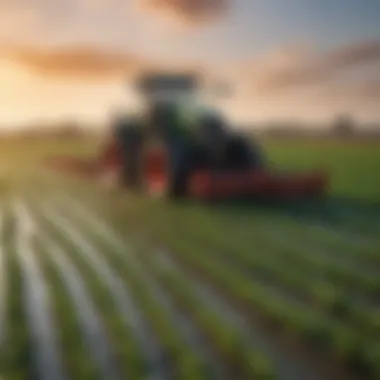
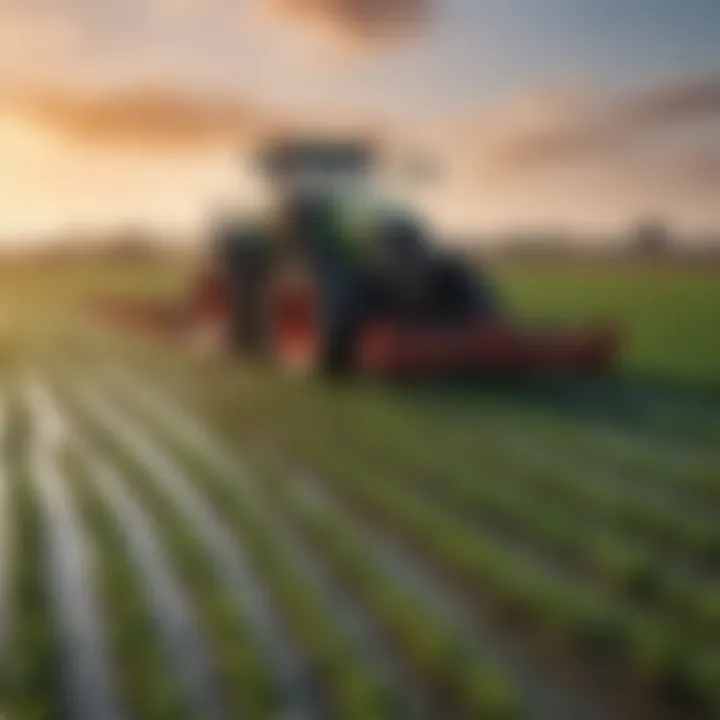
In grow-out systems, the density of cultured organisms leads to increased waste and potentially toxic conditions. Aeration not only elevates oxygen levels but also assists in the breakdown of harmful substances. Regular monitoring helps determine the effectiveness of the aeration systems, allowing farmers to make necessary adjustments based on environmental changes.
Aeration in Recirculating Aquaculture Systems
Recirculating aquaculture systems, or RAS, present a unique set of demands regarding aeration. These systems are designed to recycle water, making them potentially more sustainable but also requiring precise management of dissolved oxygen levels. Effective aeration techniques are critical in RAS to ensure proper gas exchange and to mitigate the buildup of waste products.
In this context, diffused aerators are often employed due to their efficiency in blending air into the water. Maintaining ideal oxygen levels prevents stress and promotes optimal growth among different aquatic species. The integration of aeration systems in RAS also supports biofiltration processes, which are essential for keeping water quality stable.
"Aeration is not merely a technical necessity; it is foundational to improving fish health and farm productivity."
In summary, the application of aeration techniques across various settings in aquaculture holds significant implications for operational success. Each technique must be tailored to the specific environment and goals of aquaculture practices. A deeper understanding of these applications can foster improved practices and sustainability in the industry.
Challenges of Aeration in Aquaculture
Aeration in aquaculture is both crucial and complex. While its benefits are well-known, there are significant challenges that practitioners must navigate to ensure effective implementation. Understanding these challenges is vital for the success of aquaculture operations. In this section, we will outline two main challenges: energy consumption issues and equipment maintenance and costs.
Energy Consumption Issues
Energy consumption stands as one of the primary concerns when implementing aeration systems in aquaculture. Aeration processes often demand substantial energy, which can drive operational costs higher than anticipated. The extent of energy required depends on the type of aeration system used, the volume of water being treated, and the depth of the aquatic environment.
Many aquaculture farm operators face tough decisions regarding energy sourcing. For instance, reliance on fossil fuels may lead to higher costs and environmental impacts, while renewable energy options may seem appealing but often require significant upfront investment. Furthermore, ensuring a consistent energy supply can be challenging in remote or rural areas.
"The cost of energy not only influences the bottom line but also affects the long-term sustainability of aquaculture practices."
To address these issues, operators may need to evaluate the energy efficiency of their aeration systems. Choosing the right technology and scheduling aeration during off-peak hours can help mitigate high energy costs.
Equipment Maintenance and Costs
The maintenance and costs associated with aeration equipment present another set of challenges. Like any mechanical system, aerators require regular maintenance to function optimally. This includes routine checks, repairs, and possible replacements of worn-out parts. Failure to perform adequate maintenance can lead to inefficiencies in aeration, which will ultimately impact the health of aquatic species and the overall productivity of the farm.
Costs associated with high-quality aeration equipment can be significant. While investing in durable and efficient systems may yield long-term savings in energy and maintenance, initial costs can be prohibitive for smaller operations. This creates a barrier for entry, especially for new farmers who may already be under financial strain.
Farmers should consider planning for both initial equipment costs and ongoing maintenance costs in their budgets. Emphasizing preventative maintenance can reduce unexpected expenses and enhance system longevity. Finding a reliable equipment supplier who offers support and guidance can also be a valuable step for ensuring the efficient operation of aeration systems.
The Future of Aeration in Aquaculture
The future of aeration in aquaculture holds transformative potential for the industry. As global demand for seafood increases, aquaculture systems must innovate to remain sustainable and efficient. Effective aeration techniques not only support aquatic life but also improve overall productivity. This section delves into key innovations and sustainability considerations that will shape aeration practices moving forward.
Innovations in Aeration Technology
Emerging technologies are revolutionizing aeration systems. Advanced sensors and monitoring systems allow for real-time assessment of oxygen levels. Intelligent aerators can automatically adjust output based on water quality parameters. This precision helps optimize oxygen distribution, reducing waste and energy consumption. For instance, systems using artificial intelligence can predict oxygen demand patterns, leading to smarter aeration strategies.
Moreover, new materials and designs are enhancing equipment efficiency. Aerators made from durable, lightweight materials minimize maintenance needs while ensuring longer operational lifespans. Some innovations, like horizontal aeration systems, are designed to maximize surface area for gas exchange, improving oxygen transfer rates.
The integration of solar-powered aeration technology is a noteworthy advancement. By harnessing the sun's energy, aquaculture facilities can reduce operating costs while minimizing their carbon footprint.
Sustainability Considerations
Sustainability is now a central focus in aquaculture, and aeration systems are no exception. Efficient aeration contributes to a balanced ecosystem by promoting water quality and reducing the need for chemical treatments. This is crucial for maintaining biodiversity in aquatic environments.
When implementing new aeration technologies, it is essential to consider their ecological impact. Sustainable practices include evaluating energy sources, using eco-friendly materials, and monitoring emissions. Aquaculture farms are increasingly compelled to adopt solutions that provide both economic and environmental benefits. As an example, utilizing renewable energy for aeration can significantly reduce greenhouse gas emissions, aligning operations with global sustainability goals.
Key sustainability strategies include:
- Implementing energy-efficient aeration systems
- Utilizing renewable and local energy sources
- Regularly assessing the impact of aeration on aquatic ecosystems
Regulatory Considerations for Aeration Systems
In the realm of aquaculture, regulatory considerations for aeration systems play a crucial role. These regulations ensure that aeration practices are not only effective but also environmentally sustainable. The significance lies in preventing detrimental impacts on aquatic ecosystems, enhancing operational efficiency, and ensuring compliance with local and international standards. For those involved in aquaculture, understanding these regulatory frameworks is essential for both legal compliance and fostering a responsible approach to fish farming.
Compliance with Environmental Standards
Environmental standards dictate how aquaculture operations interact with natural ecosystems. When implementing aeration systems, it is imperative to comply with these standards to mitigate adverse effects on local water bodies. Non-compliance can lead to serious consequences, including legal actions and the potential for ecosystem degradation.
Key aspects include:
- Water Quality: Aeration must enhance rather than harm water quality, ensuring that oxygen levels support aquatic life without introducing pollutants.
- Impact Assessment: Before installation, operators often need to conduct environmental impact assessments to evaluate potential effects on local fauna and flora.
- Monitoring and Reporting: Regular monitoring helps ensure that aeration practices stay within permissible limits, and reporting findings to appropriate regulatory bodies is essential.
Meeting these standards protects water bodies and contributes positively to the aquaculture ecosystem.
Permitting Process for Aeration Systems
Navigating the permitting process for aeration systems can be complex. Each region may have distinct requirements that must be adhered to for legal operation. This process is critical for establishing aeration systems that conform to environmental and safety standards.
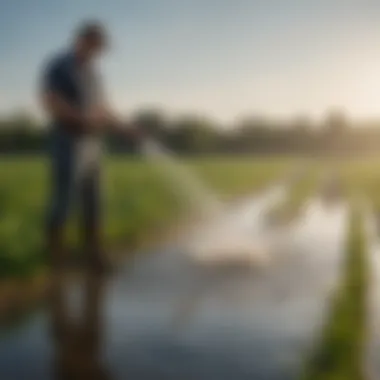
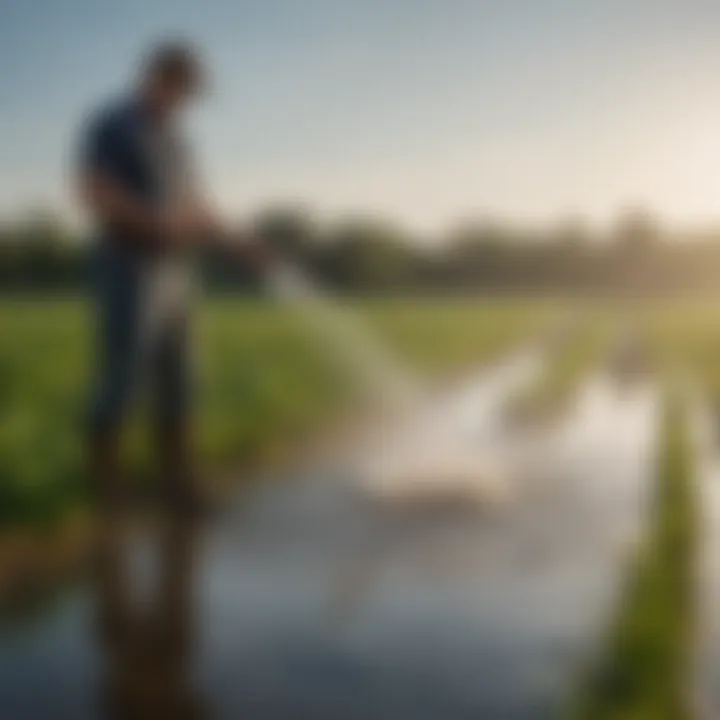
Essential steps in the permitting process include:
- Application Submission: Operators must prepare and submit detailed plans, including descriptions of the proposed aeration system, its impact on the environment, and operational specifications.
- Regulatory Review: Applications undergo scrutiny from regulatory agencies. They assess compliance with environmental standards and project feasibility.
- Public Consultation: In some jurisdictions, public consultation may be necessary. Engaging with local communities can help address potential concerns and foster support for aquaculture initiatives.
- Final Approval: After thorough evaluation, regulators grant permits, allowing for the installation and operation of the aeration systems.
Following these steps ensures that aquaculture practices are transparent and responsible, benefiting both the industry and the environment.
Case Studies: Successful Aeration Practices
In the realm of aquaculture, case studies play a vital role in illustrating the effectiveness and application of aeration techniques. These real-world examples offer insight into the practical benefits of various aeration systems, helping farming operations optimize their processes. Analyzing successful aeration practices reveals how they directly contribute to improved aquatic health and productivity.
Importance of Case Studies
Case studies serve several purposes in aquaculture aeration. They provide empirical data showcasing the impacts of aeration systems in different environments. By examining these cases, aquaculture professionals can identify patterns that lead to improved productivity and sustainability. Here are a few specific reasons why case studies are important:
- Illustrative Evidence: Real-world scenarios demonstrate the benefits of aeration more convincingly than theoretical discussions alone. They create a better understanding of the systems in action.
- Benchmarking Tool: Aquaculture farmers can use successful case studies as benchmarks. These examples guide decision-making on what systems and practices might be most suitable for their operations.
- Innovation Catalyst: Insights from various case studies can spark innovative thinking. Solutions that have worked in one region or species can inspire adaptations in others.
Detailed Examples
1. AquaCultura in Singapore:
AquaCultura uses diffused aeration systems to maintain optimal oxygen levels in their raceway ponds. The success of this method has led to a 20% increase in fish growth rates. Local trials highlighted that the aeration equipment reduces energy consumption while maintaining high dissolved oxygen concentrations.
2. Ocean Harvest Aquafarms, USA:
Ocean Harvest implemented mechanical aerators in their recirculating aquaculture systems (RAS). Monitoring results showed improved water quality metrics, including lower ammonia levels. This case highlights how effective aeration can lead to enhanced overall farm sustainability.
3. Greenfield Fishery, Canada:
This fishery adopted spray aerators across ponds. After implementation, there was a noticeable reduction in fish stress levels. Fish mortality rates dropped significantly. This outcome illustrates how careful consideration of aeration techniques can result in healthier aquatic life.
Considerations in Successful Implementations
When analyzing these cases, a few considerations emerge as vital for successful aeration practices:
- Alignment with Farm Goals: Each aeration system should align with specific farm goals, whether those are growth rates, water quality metrics, or cost-effectiveness.
- Local Environment: The ecosystem's particular features influence the effectiveness of aeration techniques, highlighting the need for tailored solutions.
- Monitoring and Evaluation: Regular monitoring is essential for understanding the ongoing effectiveness of aeration systems. Continual evaluation helps in adjusting practices to meet changing conditions.
"Real-world examples provide clarity and understanding on the effectiveness of aeration systems that theoretical discussions may lack."
Culmination
Summary of Key Points
This section highlights the essential elements discussed in the article regarding aeration in aquaculture. Understanding these key points offers valuable insights for those involved in fish farming and aquaculture practices.
Importance of Aeration
Aeration is critical in aquaculture. It directly affects the oxygen levels in water, which is fundamental for the health and growth of aquatic species. Higher oxygen levels improve the overall growth rates and lead to healthier fish. Additionally, aeration helps in the removal of waste products and toxic materials. Effective aeration systems are therefore seen as a vital component in sustaining aquatic environments.
Benefits Highlighted
Several benefits arise from proper aeration techniques:
- Improved water quality: By maintaining adequate oxygen levels, aeration contributes to cleaner water conditions.
- Enhanced growth rates: It supports faster development of fish and shrimp, fostering more efficient production.
- Reduction of toxic substances: Aeration aids in breaking down harmful materials, which can be produced by the organisms in the aquaculture systems.
Emphasis is also placed on how these benefits directly correlate to economic viability and sustainability in aquaculture. The ability to produce a healthy yield while maintaining environmental balance is crucial for the future of fish farming.
Considerations for Practitioners
The summary also outlines some considerations for aquaculture practitioners:
- Adopting the right aeration technologies to suit specific farm types.
- Balancing energy consumption with cost-effectiveness to ensure sustainable practices.
- Understanding compliance with environmental regulations to avoid legal issues.
Effective aeration not only improves the operational efficiency of aquaculture systems but also strengthens environmental stewardship.
By synthesizing these points, practitioners can enhance their strategies and improve the health of aquatic ecosystems while continuing to meet rising global food demands.
References and Further Reading
In the realm of aquaculture, the understanding of aeration is not just a technical necessity; it is central to the health and productivity of aquatic systems. The section on References and Further Reading serves multiple purposes, primarily aimed at fostering a deeper comprehension of the subject matter explored within this article. It offers a pathway for readers to expand their knowledge beyond the content presented and supports responsible practices in aquaculture.
Importance of References
- Foundation for Knowledge: Just as in any scientific discipline, having a robust base of literature supports credibility. Studies and data provide evidence of the effectiveness of specific aeration techniques. This section can reference pivotal works that detail the efficacy of various aeration systems and their applications in aquaculture.
- Innovations and Best Practices: The aquaculture field is continually evolving. Access to the latest research articles, books, and reports leads to innovative practices. Highlighting current literature encourages professionals to implement the newest methods and technologies.
- Practical Applications: References that discuss real-world scenarios demonstrate how theoretical knowledge translates into practice. These documents serve as blueprints for industry practitioners seeking to optimize their aquaculture operations through enhanced aeration practices.
Considerations About Further Reading
- Diversity of Sources: It is beneficial to include a variety of types of sources, such as peer-reviewed journals, industry reports, and comprehensive reviews. Each offers unique perspectives and findings that can enrich the reader's understanding.
- Accessibility: Sources should be selected not just for their quality but also for their accessibility. Including links to platforms such as Wikipedia or Britannica can help readers find concise summaries and definitions of crucial concepts quickly.
- Relevance to Professional Development: For aquaculture farmers and enthusiasts, reading these references can forge connections between theory and practice. They can identify how aeration solutions can be tailored to their specific environments and species, enhancing their operational efficiency.
"Knowledge is power; it equips aquaculture professionals with the insights necessary to thrive in a competitive and shifting landscape."
Suggested Reading
- Scientific Journals: Look for journals like Aquaculture and Journal of Fish Biology for peer-reviewed articles.
- Books and Texts: Consider titles that offer in-depth insights into aquaculture principles, such as The New Aquaculture: The Farming of Fish and Shellfish.
- Online Platforms: Use resources like Reddit for community discussions and Facebook for groups focused on aquaculture practices.
This section is intended as a practical tool for readers looking to deepen their understanding of aeration technologies in aquaculture. By engaging with the recommended resources, they can leverage knowledge to improve their practices and contribute to the sustainability of aquatic systems.



